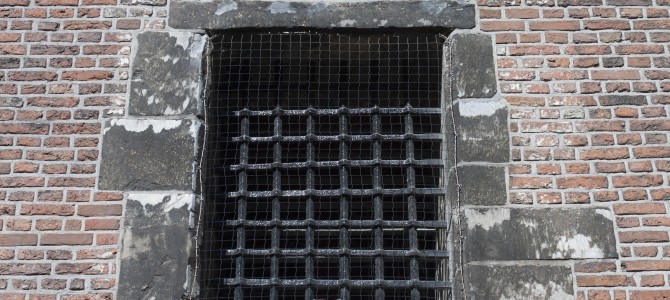In Louisiana, a man is serving life in prison for stealing three belts from a department store. This prison sentence could cost taxpayers a million dollars, but it is unclear if the store ever got the belts back. Every major religious tradition teaches that those who steal should make their victims whole, including the Biblical command that three times the value of stolen property be paid back, but restitution is ordered and paid in less than a third of property offense cases. Obstacles to obtaining restitution include overuse of incarceration for property offenders who are not career criminals, the imposition of excessive fines and fees to fund government before the victim has collected restitution, and collateral consequences of conviction such as denial of occupational licenses that make it hard for many ex-offenders to hold a job.
The underlying problem is viewing the government as the victim of crime, instead of the individual who was actually harmed. Restorative justice programs are a better alternative that return us to the original conception in western civilization of a crime as one person harming another. However, this conception was largely abandoned when monarchies came to power that viewed citizens as subjects of the king and, accordingly, demanded that the offender make the king whole for violating the rights of one of his subjects.
In contrast, restorative justice programs operate under the belief that the individual who suffered the direct harm of the criminal act should be permitted to make decisions relevant to the case, should be made whole before any funds are taken by the government, and should be granted the opportunity to confront their victimizer with the harm he or she had wrought.
While there is no one wholly representative restorative justice program model, all share common features, including the consent of both the victim and defendant, who waives his right to trial. The most central element is the victim-offender mediation conference, wherein the victim and offender discuss the criminal act, its fallout, and come to a resolution on how the offender will make the victim whole again. This may include an apology, monetary restitution, service restitution and sometimes community service.
Conferences can enter into both as pretrial diversions or as a post-adjudication sanctions handed down by the judge. While both models often follow similar outlines, the former is much preferable as it greatly expedites the resolution of the case and offers the offender an opportunity of avoid a criminal record if they satisfactorily complete the terms of the mediated agreement. Should the terms be ignored or the victim be dissatisfied with the process, the offender will be directed into the court system.
These programs focus on property offenses, and in some cases minor assaults that did not involve serious injury, but of course not even all such offenders are suitable. For example, career criminals are unlikely to be deterred from future offending and may need to be incarcerated. Nevertheless, for the teenager who broke into a car to steal a music player or the young adult with no criminal record who started a drunken altercation at a sporting event, these programs offer the chance to restore the harm they caused. Most importantly, to be eligible, the offender must be willing to take responsibility and make amends for the harm they caused.
Though limited in adoption, restorative justice programs have shown promising results in dealing with low-level offenders in the United States and abroad. Studies have shown that in nearly 90 percent of mediated cases an agreement is reached and fulfilled. Victim satisfaction is far higher than in the court system and recidivism is lower, as many offenders come to better understand how their actions did not just violate the words of a law on a piece of paper, but also harmed another human being. This is to say nothing of the avoided costs of processing such cases in the formal justice system.
However, for victims of low-level offenses, restorative justice programs offer the opportunity for the offender to show responsibility and genuine contrition for the act, for restitution to be given, and – most importantly – for the victims’ voice to be heard, to receive recompense, and to know that the offender appreciates the harm they caused. For first-time and low-level offenders, restorative justice offers them a path to a productive, law-abiding life that is guided by a concern for others. In short, restorative justice leads to a lot more justice with a lot less government.
Derek M. Cohen is policy analyst for the Center for Effective Justice with the Texas Public Policy Foundation, a non-profit, free-market research institute based in Austin. He may be reached at dcohen@texaspolicy.com.









